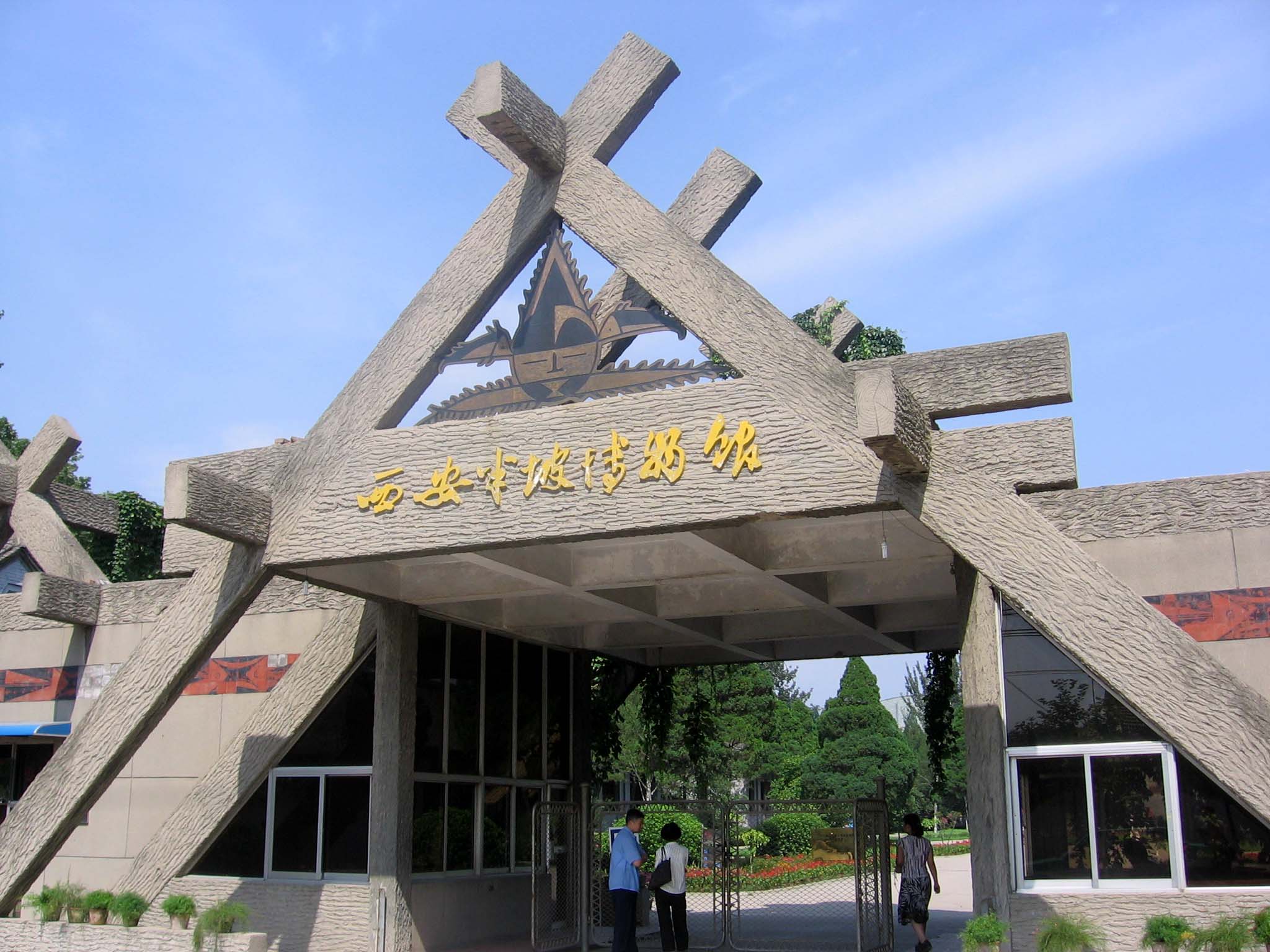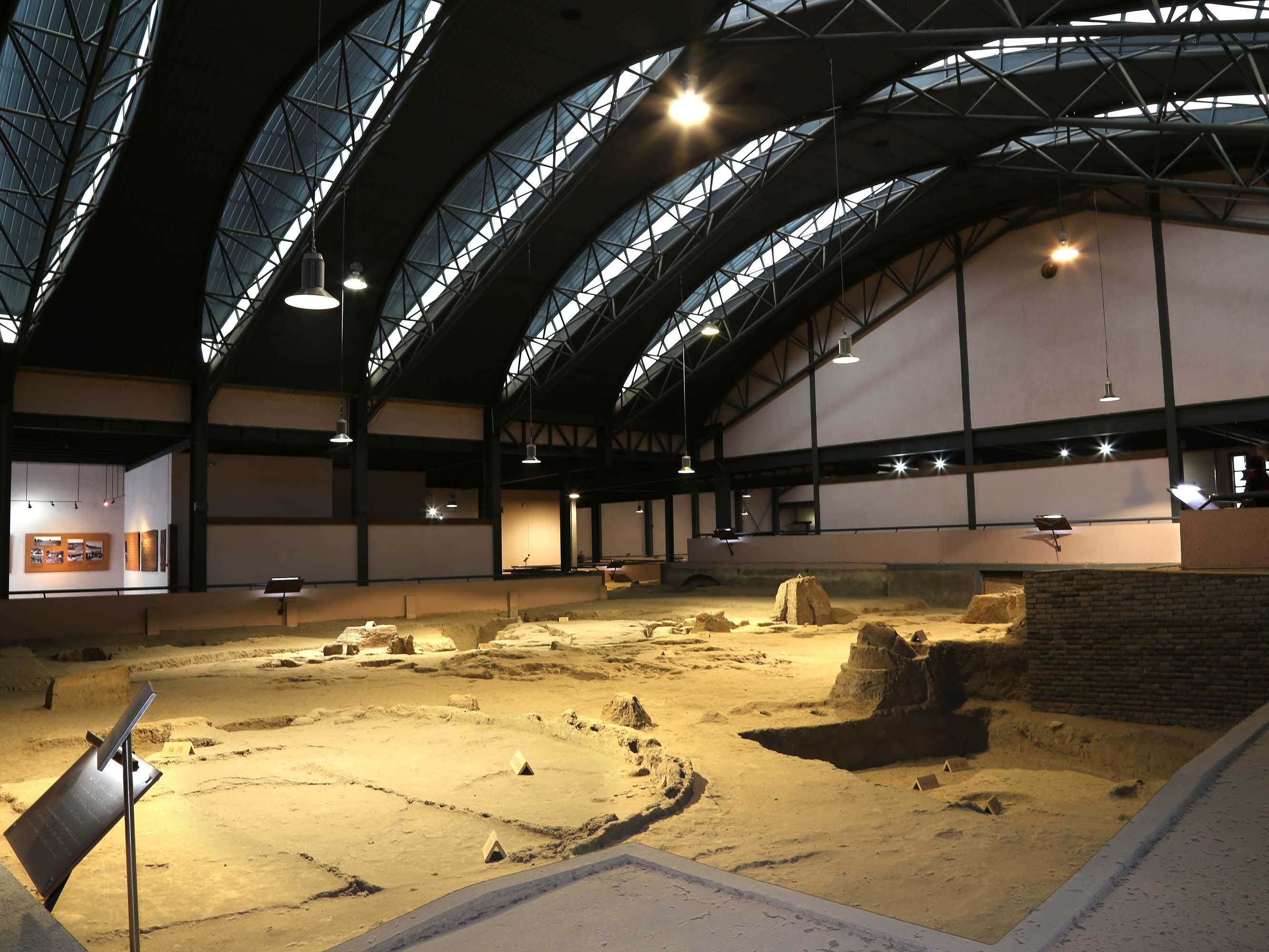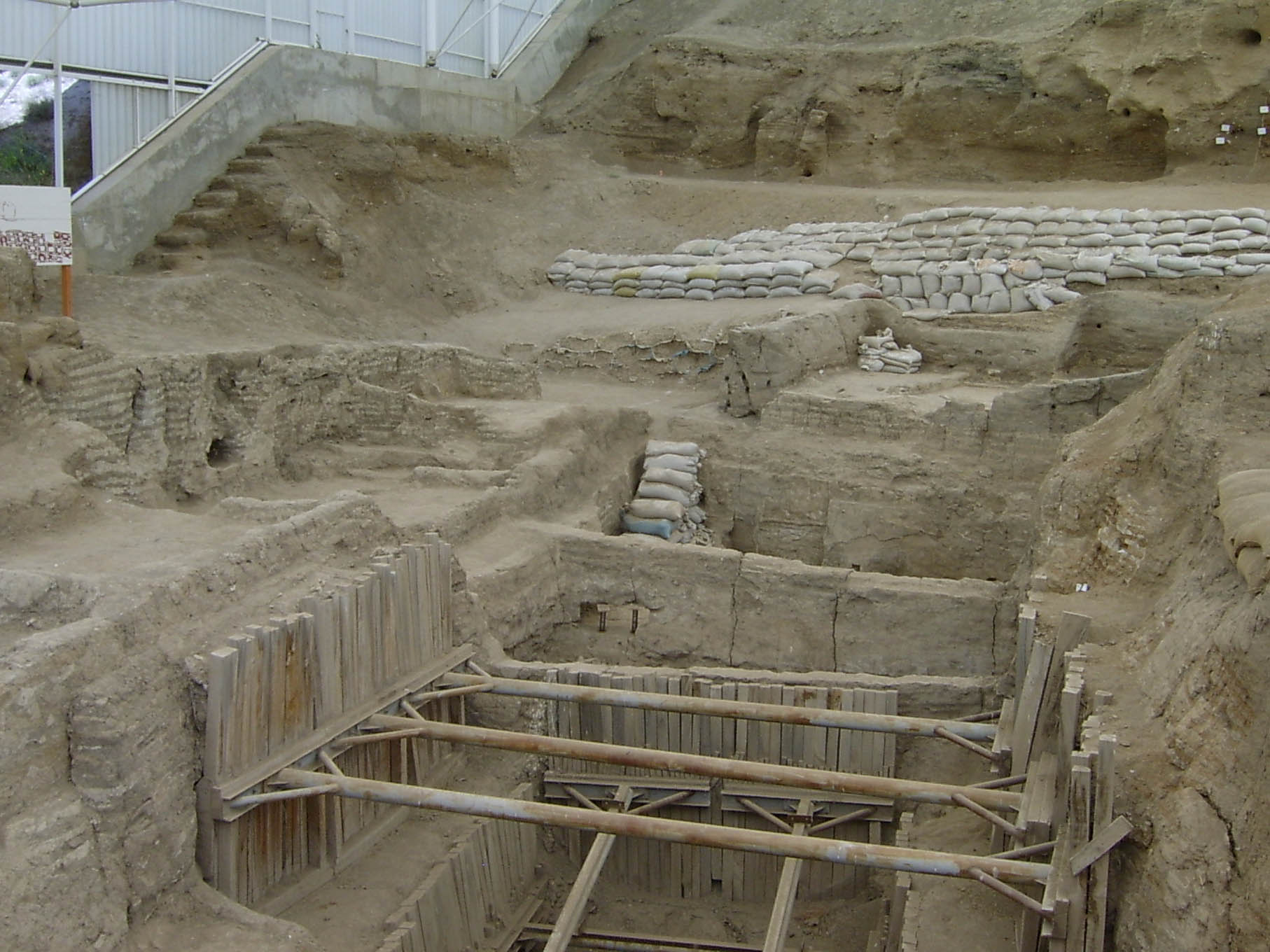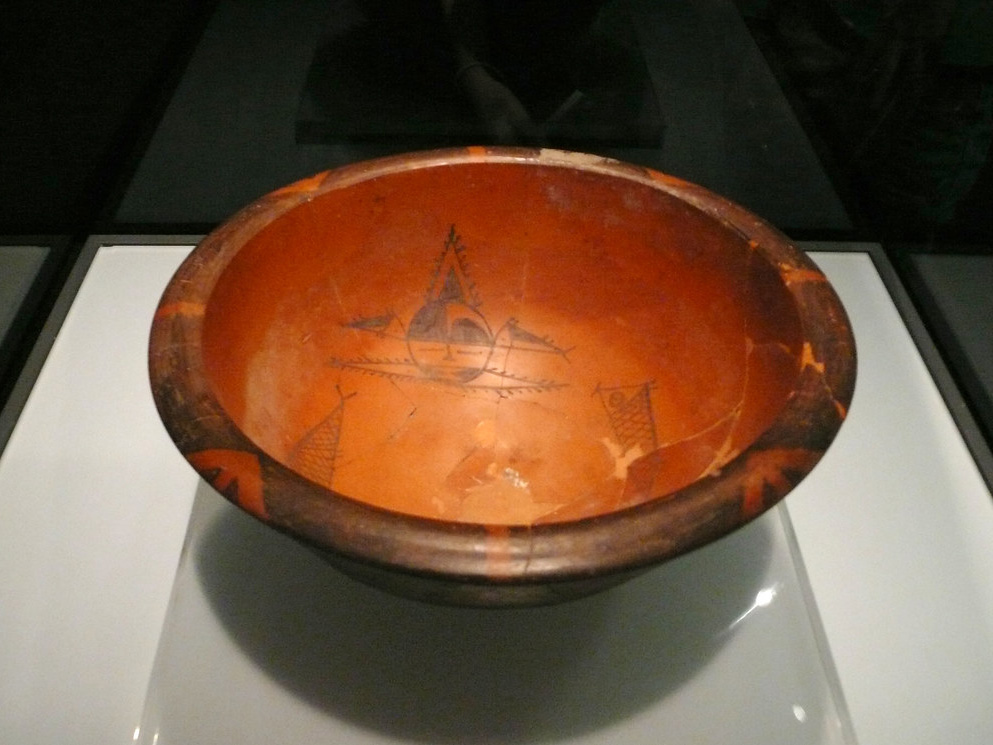Xian Tours
Beijing Tours
China Tour Packages
About
From 1954 to 1957, nearly 200 archaeologists were appointed and 5 big excavations were organized, resulting in 45 huts, 2 stables, over 200 storage pits, 6 kilns, 250 different kinds of graves, and about 10,000 stone and bone tools being discovered. The excavation of the Banpo Neolithic Site turned out to be one of the most significant neolithic discoveries in the whole world.
The whole community is set out in an irregular semi-circular shape with the residential area seated in the center. The whole settlement can be divided into north and south parts, each containing a large house for public congregations, a stable for domesticated animals and many small huts and cellars. The central residential area is surrounded by a square moat for protection and for drainage. To the north, there is a public cemetery and to the east lie the kilns. According to available records, this village hosted two clans as there are two residential areas and both have their own agricultural instruments and tools for fishing and hunting. Banpo primitives also created ceramics. They fashioned these ceramics with color, geometric markings and paintings. They also had ornaments made of bones or stones for daily wearing or funerary objects.

In 2003, the site underwent several large scale renovations and was finally accessible again in 2006.
As a matriarchal society, women had a high social status. Being the crucial labor force, they were responsible for pottery making, spinning, raising families and livestock, while the men’s job lay only in fishing and hunting.

The Banpo site is comprised of a residential area, pottery area, and burial area. The Residential area is the most important part of the settlement, surrounded by a big moat 6-8 meters wide and 5-6 meters deep. Inside the residential area, there is a 2-meter-wide, 1.5-meter-deep small trench dividing this area into two related but separate communities. North of the big moat is the public cemetery, with the pottery making kilns lying to the east.
Forty-six houses in different shapes were discovered. Some are round, some are square, and others are rectangular. Architecturally, some houses are dug to 1-meter below the ground level, while some are built on the ground. Most huts are semi-caves with deep floors and high doors.
Belonging to the New Stone Era, the Banpo people mainly used timber and stone to make tools. Each house has a clay gateway between the door and living room. In the center of the house, there is a circular or ladle-shaped bed connected to the hearth, surrounding which are 1-6 pole holes. The walls were made of wood and topped with a thatch roof. Mixture of thatch and mud was used to fashion and reinforce these walls for good insulation. Some of the circular houses have walls supported by small pillars woven with twigs and then covered with the thatch & mud mixture.
These houses were as small as 12 sq meters or as large as 160 sq meters. Each had a rain shed in front of the door, acting as a rudimentary hall. Inside the door, there was a back room connecting two small rooms on both sides, forming the same layout for all houses: one front hall and two back rooms.
The Banpo Settlement Center was a big hall of about 160 sq meters. Inside the hall, there was an activity space in the front for public congregations and meetings and 3 separate rooms in the back accommodating esteemed female elders or clan chiefs. In the meantime, this settlement center served as a refuge for elders and children in critical times.
The square-ground houses built with rafters, planks and clay are the advanced form derived from the early semi-cave houses. These houses were supported by 12 timber piles in 3*4, forming a strong regular pillar net. This may have in certain ways influenced the wooden houses built in China in later times.

Cellars refer to the caves that were used to store food and tools. There were over 200 cellars found on the Banpo site, most of them were scattered within the residential area, near to the houses. The early cellars were usually smaller and in multiple shapes, while the later cellars are comparably bigger and a lot more like round bags, and have smooth walls and ground. Cellars from same era tend to appear in same area. Leftover meals or different kinds of tools are usually found in those cellars. Particularly in one cellar, an 18cm decayed millet head was found indicating millet used to be the staple food at that time.
Children were buried a bit differently. They were usually put in a special pottery jars with a pierced bottom and buried near the residential area.
According to scientific calculation, the excavated earth volume from this moat was about 11,000 m3, equivalent to the loading volume of 3,666 trucks with 3t capacity. It’s quite hard to imagine such a massive undertaking being done using primitive tools like stone shovels and stone knives.
The Banpo people created a piece of land just for kilns, indicating that their pottery technique was quite developed at that time. They not only produced common goods like pots and bowls, they can even used color and markings to decorate them.

5,275 various instruments made from different materials like stone, bone, horn, pottery, clam, and animal teeth as well as 2638 semi-finished pottery items were excavated at the Banpo site. Those tools can be roughly classified into three categories: household tools, fishing & hunting tools and manufacturing tools. Tools with ambiguous usage were classified into one sector. The Banpo people witnessed a shift from a hunting culture to an agrarian culture. The spears and clubs excavated indicate that they still applied hunting and fishing skills. While the use of sickles and plows, the discovery of millet and the staples near to the site demonstrate that they were shifting to an agricultural society.
The most commonly used household tools were ceramics. There were over 50,000 pieces of pottery found, accounting for about 80% of the all the discoveries. About 1,000 vessels and utensils were repairable. The pottery was classified into different categories based on shape, texture, and usage. Some were food containers, some were utensils and some were water containers. Inside some pottery, unrecognizable symbols were found leaving their function open to speculation. There were over 100 markings and symbols in 22 different containers. Some researchers think they might be the earliest Chinese characters.
There were altogether 1,900 pieces of ornaments in 9 classes discovered. Some were hair ornaments, some were earrings, some were necklaces, and others were hand and waist ornaments. The base materials for those pieces were also varied including stone, bone, jade and clam, but most were made of pottery.
Most of the animal bones discovered here are from mammals like pigs, goats, deer, musk deer, dogs, foxes, horses, rabbits, and field mice. The bones found were all small fragments of domesticated or wild animals. It turns out that these animals’ bones were smashed for the meat and marrow.
There were 2 gray & black pottery whistles excavated. Both of them were made of clay and fired, and were clean, but not smooth.

The Banpo people revered a different culture in terms of marriage and child rearing. Unlike modern people, they didn’t abide by monogamy. Instead, each woman could have multiple sexual relations with men. A men would visit a woman’s house at night and leave in the morning to go back to his mother’s home. They could only work on their mother’s land.
Women were in the dominant position. They would take care of the whole family and distribute all the necessities to family members. Children were reared by their mothers and may never have known their fathers. This pattern is still practiced in some rural areas of China, like the Mosuo people in Yunnan.
The graves opened in the Banpo site also back up the theory of a matriarchal society. Every female’s grave possessed more funerary goods than the males and no male grave discovered showed any indication of a male leader while plenty of them show female leaders.
It’s alleged that the Banpo Village was abandoned around 3750 B.C. There is no satisfactory explanation for this, except that evidence indicates there was flood damage at the site. However, there is no way of knowing whether it was before or after people left this site.
The Banpo museum is built upon the Banpo Neolithic Site. It has collected the vast majority of the artefacts from the site and moved them to the exhibition hall, presenting the whole matrilineal society with the help of modern technology.
The whole museum covers an area of 4500 sq meters and is comprised of three exhibition halls: Excavations Hall, Site Hall and Auxiliary Hall. The Excavations Hall is mainly comprised of two exhibition rooms, the Exhibition Room I and the Exhibition Room II. Most of the tools, objects, and arts excavated from the Banpo site and Jiangzhai site are displayed here. The Site Hall houses the remains where our primitive ancestors used to live including their homes, cellars, kilns, and cemeteries vividly presenting the life of the Banpo people pioneering in this land. In the Auxiliary Hall, there are two rooms for special exhibitions about prehistorical excavations.
Address: No. 155, Banpo Road, Dongjiao, Xi’an, China;
Public transportation: Take metro Line 1 and get off the train at Banpo Station, walk westwards about 300 meters, turn left and continue about 200 meters.
Opening hours: Mar. 1 - Nov. 30: 08:00 - 17:30; Dec. 1- Feb.28/29: 08:00 - 17:00
Entrance ticket price: 55 RMB/pax.
Recommended Itinerary: Day Tour to Terracotta Warriors and Banpo Neolithic Museum
Copyright © 2019 Lily Sun China Tours International, Inc. Terms &conditions | Privacy Policy | Sitemap